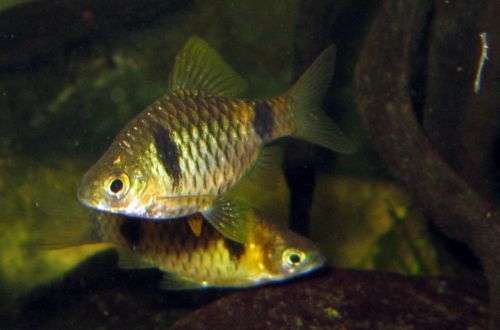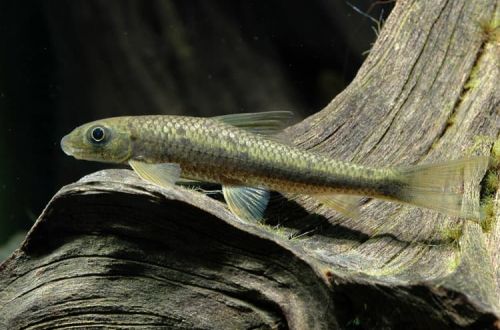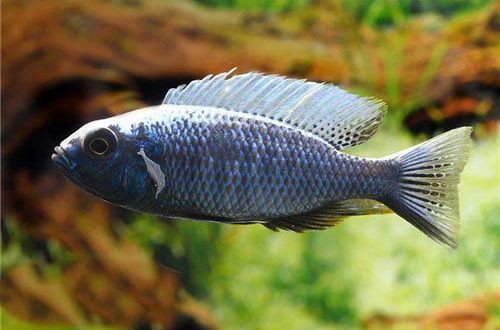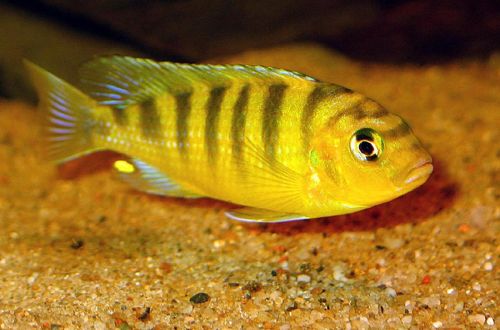
Lombardo
The Lombardo cichlid or Pseudotropheus Lombardo, scientific name Maylandia lombardoi, belongs to the Cichlidae family. Bright beautiful fish with a warlike disposition. Due to its behavior, it is not recommended for beginner aquarists. Although the rest is quite simple in content.

It first received a scientific description in 1977, moreover, by two researchers at once, independently of each other, who gave the fish two different names. One of them was Pseudotropheus lombardoi, which has been used in the aquarium trade for a long time. Later, in the course of a classification change, it received its modern name.
Contents
Habitat
Endemic to the African Lake Malawi, distributed in the southwestern part near the islands of Mbenji (Mbenji Island) and Namalinji (Namalenje Island). The natural habitat is typical of a rift lake. The coastline is rocky, which turns into sandy substrates at depth.
Brief information:
- The volume of the aquarium – from 200 liters.
- Temperature – 24-28°C
- Value pH — 7.6–8.8
- Water hardness – medium to high hardness (10-25 dGH)
- Substrate type – sandy
- Lighting – moderate
- Brackish water – no
- Water movement – weak, moderate
- The size of the fish is 14–15 cm.
- Nutrition – plant-based food
- Temperament – aggressive
- Keeping in a harem with one male and several females
Description
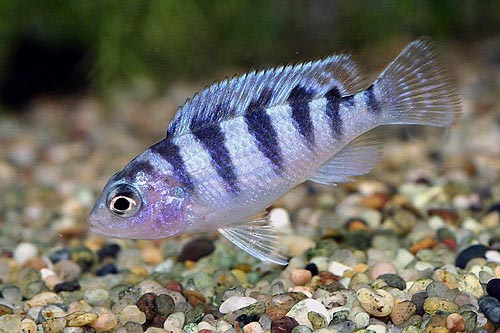
Adult individuals reach a length of 14–15 cm. The fish have pronounced sexual dimorphism. Males are yellow with dark stripes. The females are blue in color with a similar body pattern. It is worth noting that only the alpha male will have a yellow color, subdominant males will look like females.
Food
The diet is varied. Lombardo cichlids will accept all types of popular food (dry, frozen and live). The only important condition is the addition of herbal supplements. They can be kept together with dry food, or added separately. Spirulina flakes or nori pieces are great.
Maintenance and care, arrangement of the aquarium
The optimal size of the aquarium for a group of fish starts from 200 liters. The design uses a sandy substrate and piles of stones that form grottoes and crevices. It is advisable to add a few natural snags. In bright light conditions, they will become a habitat for algae – an additional source of food.
For successful keeping, it is necessary to provide water conditions suitable for the hydrochemical composition and timely remove organic waste (food residues, excrement, etc.). Installation of a filtration system and weekly replacement of part of the water (20–25% of the volume) with fresh water are mandatory.
Behavior and Compatibility
Lombardo is an aggressive and territorial member of the Mbuna cichlid. In a small aquarium, it is recommended to keep only one male and several females. Joint maintenance is only possible with other Mbuna, provided that the aquarium is at least 400 liters or more. The male of each species must have enough space on the bottom to form a territory that he will protect. With a lack of space, fierce skirmishes are inevitable. Such behavior is characteristic mainly of males, females are less warlike.
Breeding / breeding
Breeding is possible in a common aquarium. With the onset of the mating season, the male chooses a place for future spawning. It is a depression in the sand or a simple flat stone. During this period, the male becomes overly aggressive, and his courtship may seem overly persistent and rude. That is why hiding places are needed. When the female is ready, she accepts courtship and lays portions of eggs, which she immediately takes into her mouth after fertilization. Further, the entire incubation period will take place in the mouth of the female. This is an evolutionarily established mechanism for protecting future offspring, which is characteristic of the cichlids of Lake Malawi.
Fish diseases
The main cause of most diseases in Malawian cichlids is inadequate housing conditions and poor quality food, which often leads to such a disease as Malawi bloat. If the first symptoms are detected, you should check the water parameters and the presence of high concentrations of hazardous substances (ammonia, nitrites, nitrates, etc.), if necessary, bring all indicators back to normal and only then proceed with treatment. Read more about symptoms and treatments in the Aquarium Fish Diseases section.



